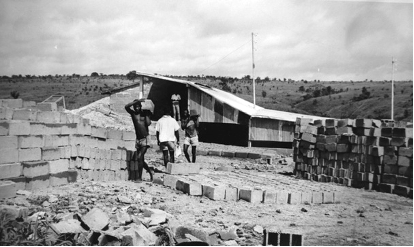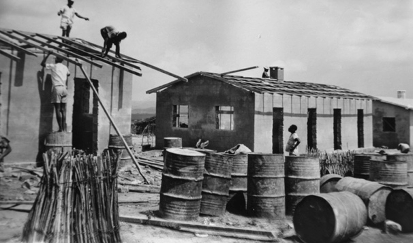Communication
Mining Labor, Housing and Building Sites in Late Colonialism across Central Africa
Event: IASTE 2025 Alexandria: Cosmopolitanism and Tradition
Authors: Beatriz Serrazina
Date: 23 – 26 May 2025
Location: Alexandria, Egypt


Summary
The construction of mining camps in late colonial Central Africa, specifically in Lunda (Angola) and the Copperbelt (encompassing parts of Zambia and the Democratic Republic of Congo), presents a complex narrative that questions the multifaceted roles of laborers within these colonial enterprises. This paper examines the conditions, contributions, and agency of workers engaged in the construction of housing and infrastructure under the rule of the Belgian Union Minière du Haut- Katanga (UMHK) and the Portuguese Companhia de Diamantes de Angola (Diamang), between the 1920s and 1970s, revealing a critical dimension of colonial exploitation, social dynamics, and resistance from the building site.
Workers and families in Lunda and the Copperbelt were pivotal to the construction of mining camps, yet their contributions are frequently overshadowed by the broader narrative of colonial expertise and development. Despite challenging conditions, laborers demonstrated significant skill in their construction efforts. Traditional artisans, with expertise in masonry, carpentry, and other crafts, played a crucial role alongside large groups of still “invisible” men and women. They were often tasked with building their own housing, using a combination of traditional construction techniques and new methods introduced through colonial influence. This self-construction not only mitigated the inadequate housing provided by the companies but also reflected – to some extent – the laborers’ adaptation to new materials such as brick, corrugated iron sheets, and imported cement. The use of local materials like mud, straw, and wood, along with the incorporation of European architectural elements, led to the emergence of hybrid forms of housing that were both practical and culturally significant.
Against this common corporate backdrop – shaped by strong cross-border and inter-imperial relations between UMHK and Diamang –, this paper questions the similarities and differences between mining camps, laborers, and building sites in Elizabethville (now Lubumbashi) and those in Lunda. These sites had different conditions and environments influenced by varying colonial administrations, mining company policies, and local contexts. While Elizabethville developed into a significant urban center, with diverse socio-cultural influences and a mix of populations from various regions, the Lunda region was arguably shaped by more dispersed and rural mining settlements. How were housing, construction methods, and technologies affected by these circumstances? What did the building site (un)cover about authorship and knowledge transfer? Were the construction yards places for the formation of cosmopolitan communities?
Click here for more information.

